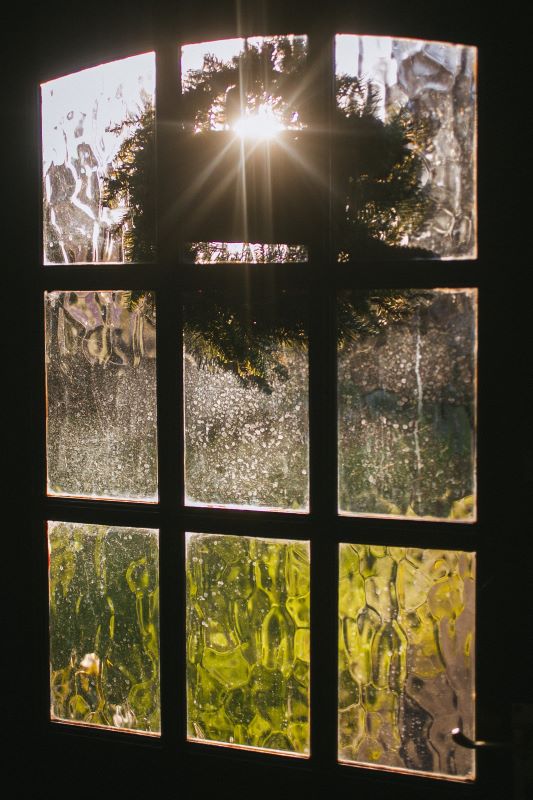Does anyone feel a draft or a breeze? If so, you may want to investigate winterizing your windows and doors to keep the chill out and the warmth in. Depending on how extensive the air leakage or insulation deficiencies are, you may or may not need to consider replacing windows or doors entirely. Before you commit to such an investment, however, there are several more affordable approaches from both inside and out.
Benefits of Winterization
Winterizing your home offers a range of benefits that go beyond just staying warm. By sealing air leaks and upgrading to energy-efficient solutions, you can significantly reduce your energy bills and increase your home's overall energy efficiency. Properly insulated windows and doors help prevent heat loss, so your heating system doesn't have to work as hard, saving you money and reducing wear and tear on your equipment.
Winterization also helps protect your investment by extending the life of your windows and doors, especially during harsh weather. Plus, using less energy is better for the environment, lowering your carbon footprint. These improvements can make a big difference in your comfort, your costs, and your home's value.
Identifying Drafty Areas
Before you can seal up your home for winter, you need to know where the cold air is getting in. Start by carefully inspecting your windows, doors, and even your walls for any signs of air leaks. Pay close attention to the window frames and door frames; these are common spots for gaps and cracks to develop over time.
A simple way to detect drafts is to hold a candle or incense stick near the edges of your windows and doors. If the flame flickers or the smoke moves, you've found a leak!
Don't forget to check for holes or gaps in your attic and along exterior walls, as these can also let in cold air. Taking the time to inspect and address these leaks will help keep your home warmer and more energy efficient all season long.
Caulk from the outside
Choosing the right caulk
Caulk is a waterproof filler and sealant useful for all sorts of home improvement projects. The number of choices available at your local hardware store will reflect that, which can be daunting if it's your first time winterizing your windows or doors. Essentially, what you're looking for is something labeled "exterior grade", which is formulated to withstand the elements.
Three types of caulk are best for weatherizing windows and doors:
-
Acrylic: An economical option for sealing narrower gaps. For better performance and longevity, look for labels such as "100% silicone," "plus silicone," or "siliconized."
-
Polyurethane: The best caulk for exterior projects due to its superior adhesion and flexibility. It's a little harder to work with, but it will save you effort in the long run because it needs to be replaced less often.
-
Hybrid: A combination of polyurethane and silicone, easier to apply than straight-up polyurethane but with a higher price tag.
How to caulk
Caulking is a simple three-step process: scrape, clean, apply.
-
Scrape away old or deteriorated caulk with a putty knife or 6-in-1 painter's tool. In some cases, a caulk remover can make this job less strenuous. Let it sit for 2 to 3 hours to work its magic.
-
Ensure the perimeter between frame/siding or frame/exterior trim is clean and clear of all leftover caulk, residues, and debris. A household cleaner or rubbing alcohol should do the trick!
-
Apply the new caulk. This is best done with a caulking gun rather than directly from the tube. Snip the caulk cartridge nozzle to dispense your desired bead size, puncture the inner seal, and load the gun. Apply consistent pressure to the trigger and hold at a 45-degree angle.

Weatherstrip from the inside
What is weatherstripping?
Weatherstripping refers to materials applied around the edges of windows and doors to prevent leaks and moisture infiltration. This job can often be performed from within your home, which means you're less likely to have to pull out the ladder. It's a good thing, too, because as with caulking, there is a dizzying array of options.
Four popular types of weatherstripping
Here are the four types of weatherstripping you should be most aware of:
- Adhesive-backed foam (aka foam tape) is applied to either the outer edges of window sashes themselves or the interior edges of door or window framing. It compresses when the windows or doors are shut to seal any gaps.
- Tubular rubber gaskets function in much the same fashion and are sold in foam-filled or hollow-core varieties. Note that the foam-filled holds its shape better than hollow-core.
- V spring or tension seal weatherstripping consists of a strip of plastic or metal folded into a V-shape that springs open when a door or window is closed to create the seal.
- Felt is the old standby, sold in rolls and cut to fit. It's not as durable or precise as other weatherstripping methods, but it is inexpensive and can be fairly effective.
Other weatherproofing solutions for windows
Window insulation kits
Window insulation kits allow you to shrink-wrap the inside of your windows with an insulating layer of plastic film. The film is stretched out to a size slightly larger than the window opening, and heat is applied until it shrinks to fit. When utilized properly, window insulation kits add a wrinkle-free, waterproof barrier that guests would hardly know is there.
Interior storm windows
Interior storm windows (aka invisible storms, window inserts, or energy panels) are clear glass or acrylic panels that pop into the interior window frame casing, sealed either magnetically or by compression.
Thermal window treatments
Thermal window treatments, such as thermally-lined drapes and cellular shades, wall off drafts while adding a decorative touch.
Extra sash lock
Ensure your sashes fit together nicely and snugly by installing an additional sash lock. Space each sash lock about a third of the way away from either side jamb.

Other weatherproofing solutions for doors
Bolt them shut
Using the deadbolt can make a significant difference. Bolting exterior doors shut creates a tighter seal against the frame.
Draft guards and door sweeps
The gap between the door and threshold is especially vulnerable to energy loss during the heating season. Draft guards (insulated tubes not attached to the bottom of the door), door sweeps (attached flat strips of plastic, aluminum, or stainless steel with nylon, plastic, vinyl, or sponge underlayers), or even rolled-up towels can cover this breach.
Need replacement windows or doors after all?
You can winterize a window or door all you want, but it won't do a bit of good if the framing is rotted out or compromised. Can you see sunlight poking through? Does it feel soft or spongy? If it ends up that you do end up requiring new windows or exterior doors, Hodges is here to supply your needs with the top energy-efficient models from the best brands in the industry. Message, call, or visit either of our two showroom locations (by appointment only).


